Substrate mapping for Ventricular Tachycardia
Raja Selvaraj JIPMER
Introduction
History
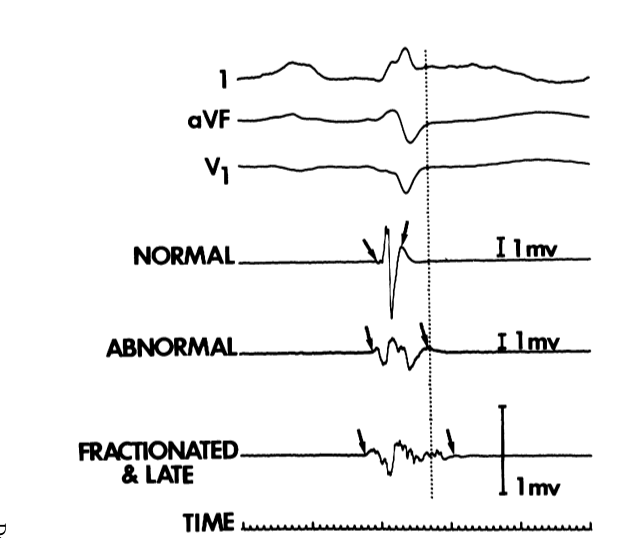
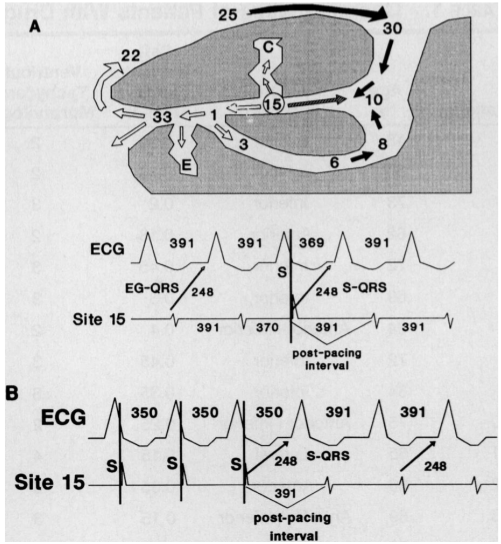
- Cassidy … Josephson. The value of catheter mapping during sinus rhythm to localize site of origin of ventricular tachycardia. Circulation 1984;69:1103
- Stevenson et al. Identification of Reentry Circuit Sites During Catheter Mapping and Radiofrequency Ablation of Ventricular Tachycardia Late After Myocardial Infarction. Circulation 1993;88:1647
Current status
- Historical progression
- Obligatory
- Not inducible
- Not mappable
- multiple morphologies
- By choice
- Obligatory
- Personal / general trend
- Evidence / change in scar characteristics
VISTA
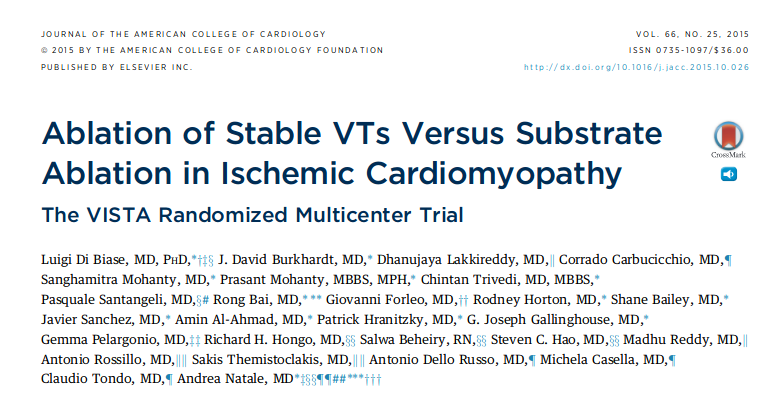
VISTA
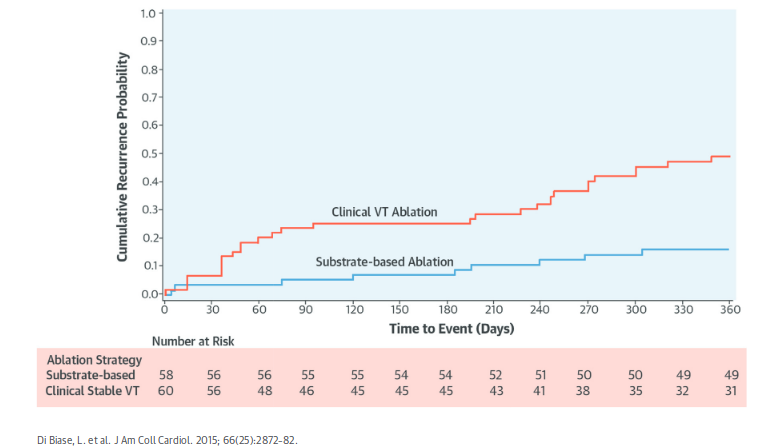
What is the rationale for substrate based ablation?

Zipes et al. Catheter ablation of Arrhythmias. 2nd Ed. 2002
Pros and cons
- More lesions
- Tackle all potential circuits
- Ablation in sinus rhythm - more stable, more effective lesions
- Hemodynamic stability of patient better
Electrograms of abnormal substrate
Low voltage zones
Importance
- Substrate usually located within
- Safe to ablate inside
- Dense scar forms anatomic barrier to anchor lesions
Cut-offs
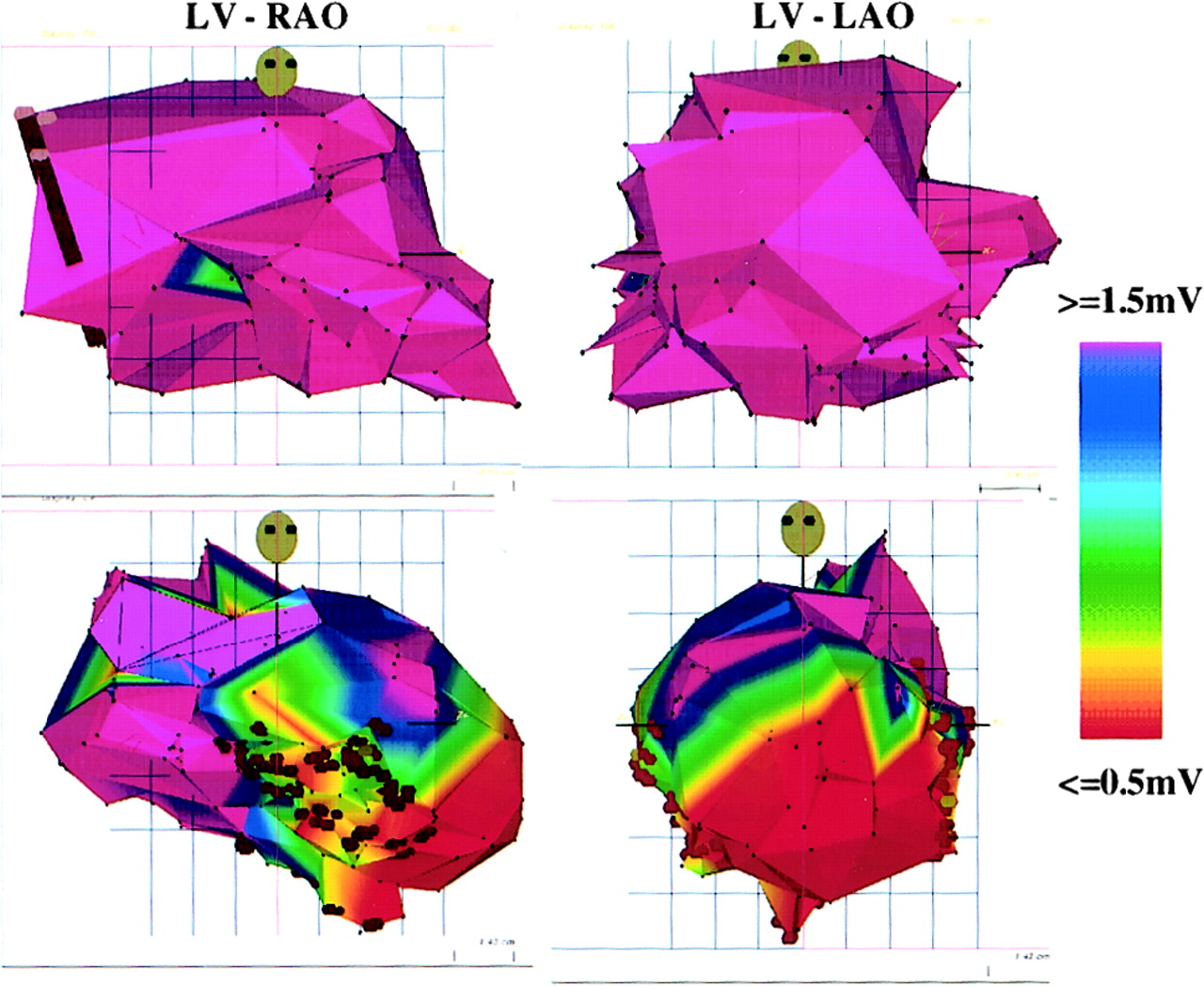
- Cut off from normal humans (1), validated in a porcine model (2)
- Marchlinsky et al. Linear Ablation Lesions for Control of Unmappable Ventricular Tachycardia in Patients With Ischemic and Nonischemic Cardiomyopathy. Circ 2000;101:1288
- Wrobleski … Vivek Reddy. Use of Electrogram Characteristics During Sinus Rhythm to Delineate the Endocardial Scar in a Porcine Model of Healed Myocardial Infarction. JCE 2003;14:524
Voltage cut-offs for endocardial signals 0.5 - 1.5 mV
- Apply to both RV and LV
- Both cut offs are flexible
- Higher voltage cut off (2.5) in patchy scar (early reperfusion)
- Patient specific cut offs ?
- Uniform, homogenous lvz with rest of myocardium not changing color (upper cut off)
- See channels / isthmus - lower cut off
High output pacing to identify scar
- No capture at 10 mA, 2 ms (1)
- May require higher outputs for capture (2)
- Soejima / Stevenson
- Sarrazin … Morady, Bogun. High-output pacing in mapping of postinfarction ventricular tachycardia. Heart Rhythm 2008;5:1709.
Unipolar voltage
- Normal > 8.27 (95th centile) (1)
- 5.5 for RV (2)
- Multiple caveats, especially in RV
- more overlap between normal and abnormal
- adjust for lvh
- 7.5 for RV septum
- 6 - RV septum over aortic root
- Hutchinson … Marchlinski. Endocardial unipolar voltage mapping to detect epicardial ventricular tachycardia substrate in patients with nonischemic left ventricular cardiomyopathy. Circ Arrhythm Electrophysiol 2011;4:49
- Polin … Marchlinski. Endocardial unipolar voltage mapping to identify epicardial substrate in arrhythmogenic right ventricular cardiomyopathy/dysplasia. Heart Rhythm 2011;8:76
Unipolar voltage
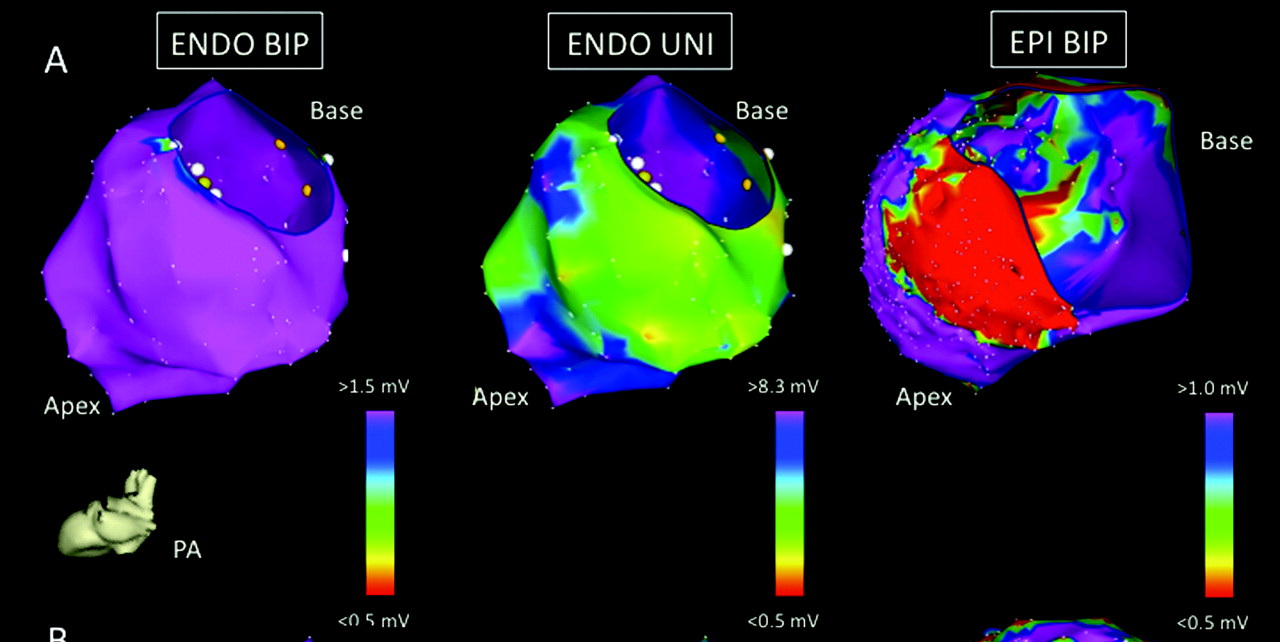
Delayed potentials
Principle
- Bundles of surviving muscle fibers within scar
- Slow conduction because of poor coupling
- Far field early signal and near field late signal
Late potential - How late is late ?
- EGM extending beyond surface QRS (1)
- Remnant from SAECG
- More likely to identify in late activated regions
- 2 or more components, separated by isoelectric segment >50 ms (sinus) or 150 ms (RV pacing) (2)
- High frequency signals distinct from far-field electrogram (3)
- Cassidy … Josephson. Endocardial catheter mapping in patients in sinus rhythm: relationship to underlying heart disease and ventricular arrhythmias. Circulation. 1986;73:645-652
- Arenal et al. Ablation of electrograms with an isolated, delayed component as treatment of unmappable monomorphic ventricular tachycardias in patients with structural heart disease. JACC 2003;41:81.
- Jais P … Haissaguerre M. Elimination of local abnormal ventricular activities: a new end point for substrate modification in patients with scar-related ventricular tachycardia. Circulation 2012;125:2184
Variables
- Catheter tip
- Sinus rhythm / pacing, pacing site
- Gain
- Window
- Density
- Contact force
Ablation approaches
Different approaches
- Linear ablation (1)
- Late potentials (2)
- LAVA (3)
- Scar homogenization (4)
- Scar dechanneling (5)
- Core isolation (6)
- Marchlinski et al. Linear ablation lesions for control of unmappable ventricular tachycardia in patients with ischemic and nonischemic cardiomyopathy. Circulation 2000;101:1288
- Arenal A et al. Ablation of electrograms with an isolated, delayed component as treatment of unmappable monomorphic ventricular tachycardias in patients with structural heart disease. J Am Coll Cardiol 2003;41:81
- Jais P … Haissaguerre M. Elimination of local abnormal ventricular activities: a new end point for substrate modification in patients with scar-related ventricular tachycardia. Circulation 2012;125:2184
- De Biase … Natale A. Endo-epicardial homogenization of the scar versus limited substrate ablation for the treatment of electrical storms in patients with ischemic cardiomyopathy. J Am Coll Cardiol 2012;60:132–141.
- Berruezo A … Brugada J. Combined endocardial and epicardial catheter ablation in arrhythmogenic right ventricular dysplasia incorporating scar dechanneling technique. Circ Arrhythm Electrophysiol 2012;5:111–121.
- Tzou WS … Marchlinski FE. Core isolation of critical arrhythmia elements for treatment of multiple scar-based ventricular tachycardias. Circ Arrhythm Electrophysiol 2015;8:353–361.
In practice
VT induction before mapping
- Not essential for substrate mapping
- Useful
- Provides baseline inducibility
- Pacemaps during mapping
Sinus rhythm or pacing ?
- Bipolar voltage comparable in sinus rhythm / ventricular pacing (1)
- RV pacing better than sinus to identify late potentials (2)
- Brunckhorst … Stevenson. Impact of Changing Activation Sequence on Bipolar Electrogram Amplitude for Voltage Mapping of Left Ventricular Infarcts Causing Ventricular Tachycardia. JCE 2005;12:137.
- Arenal et al. Ablation of electrograms with an isolated, delayed component as treatment of unmappable monomorphic ventricular tachycardias in patients with structural heart disease. JACC 2003;41:81.
Sinus rhythm or pacing
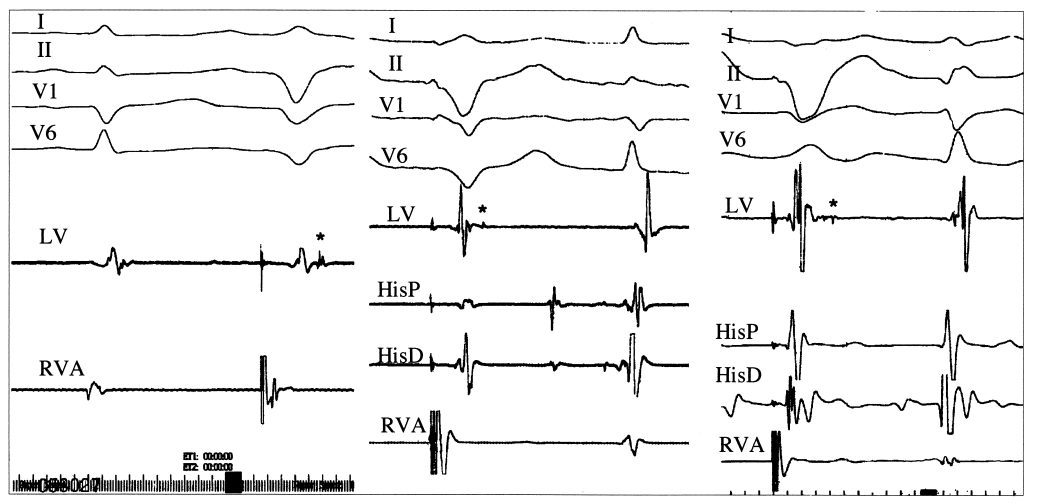
Arenal et al. Ablation of electrograms with an isolated, delayed component as treatment of unmappable monomorphic ventricular tachycardias in patients with structural heart disease. JACC 2003;41:81.
Prefer pacing unless
- Ventricular pacing not tolerated
- RV being mapped
Pacing for RV mapping
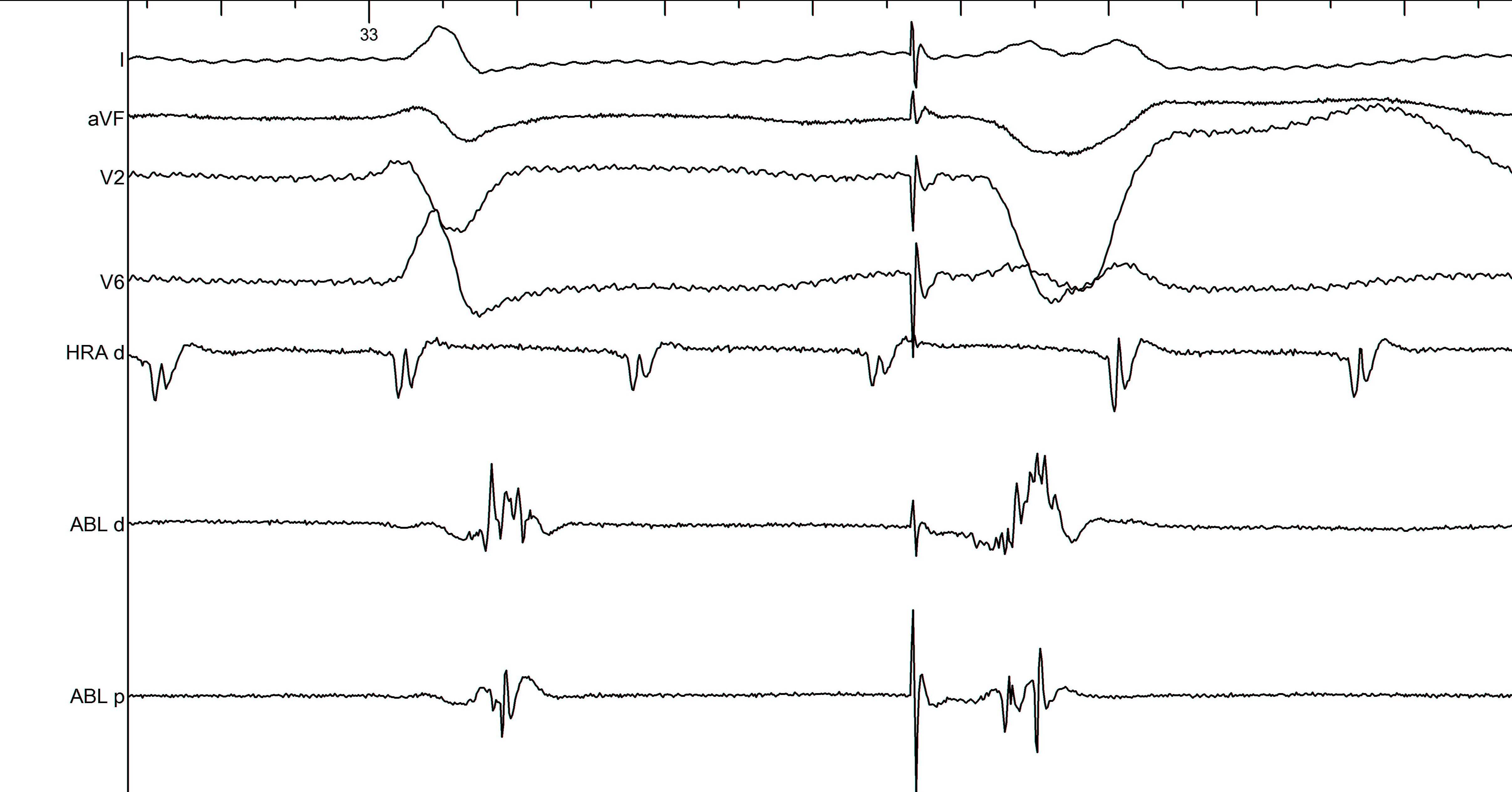
Unknown
- multiple pacing vectors at each point
- LV pacing for RV substrate ?
- Extrastimuli ?
Choosing a window

Setting gain
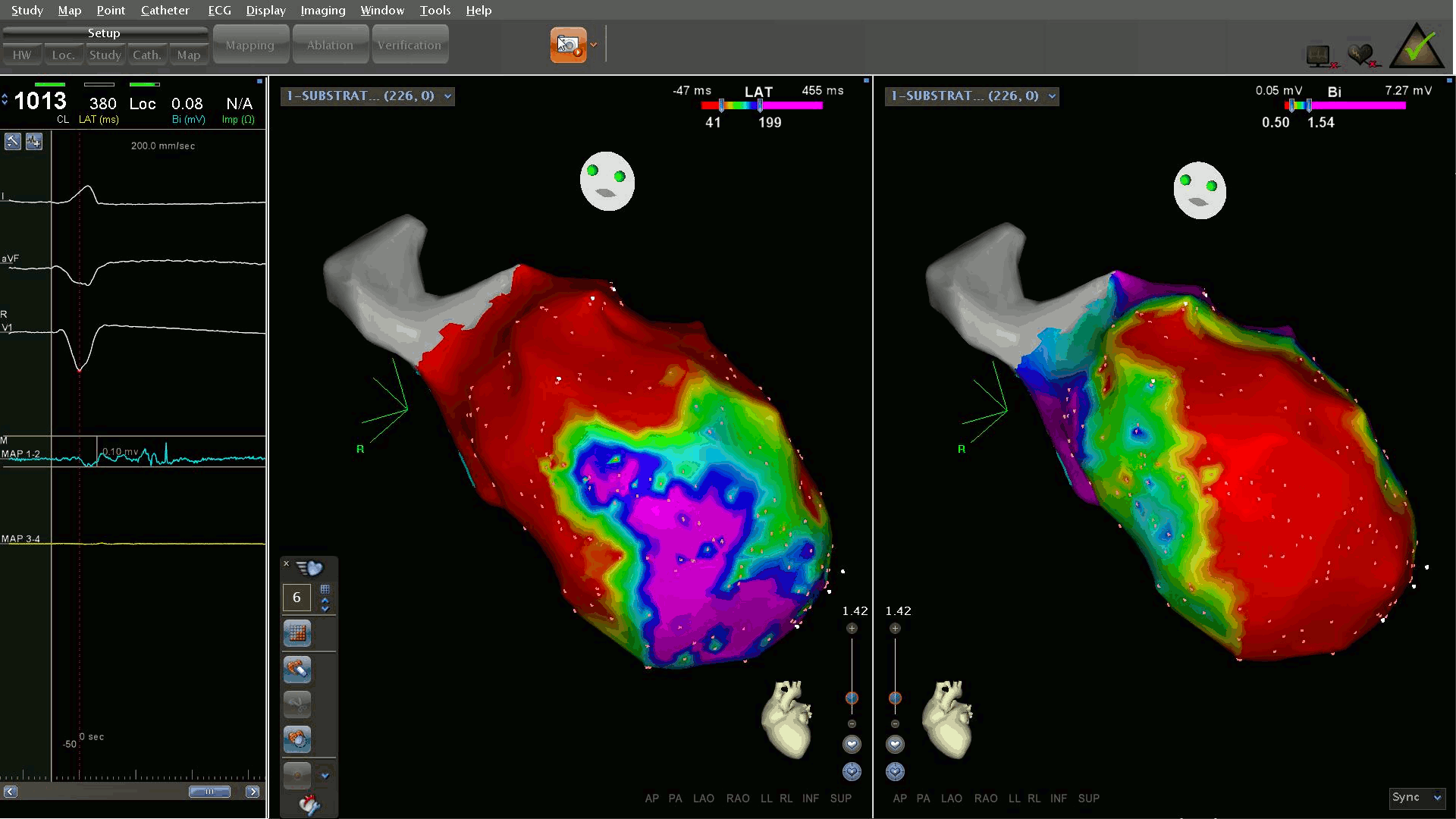
Identifying abnormal electrograms
- Setting right gain
- Operator supervised annotation
- 'Beat averaging'
Differentiate from artifact
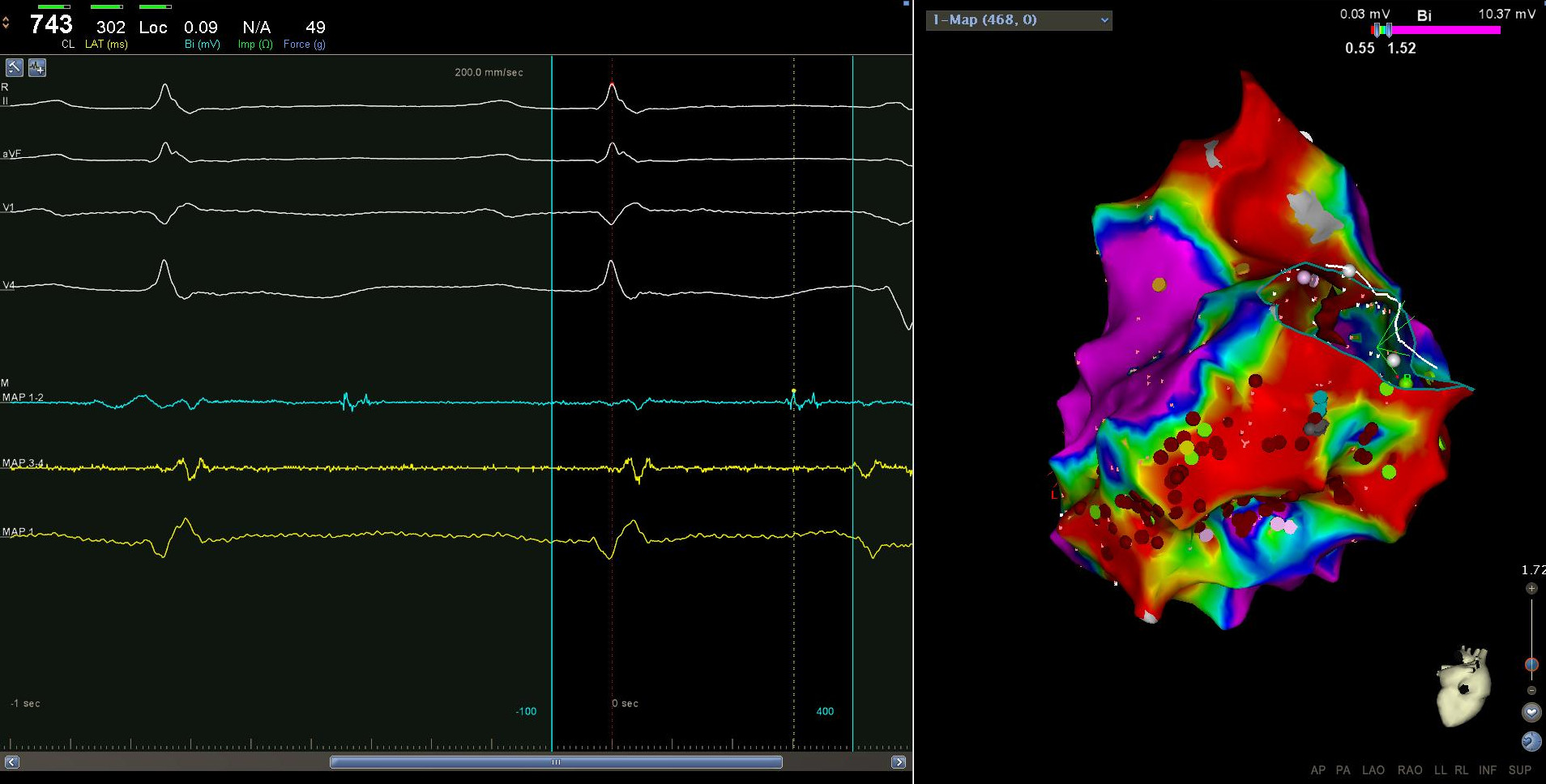
Annotating points - binary / continuous
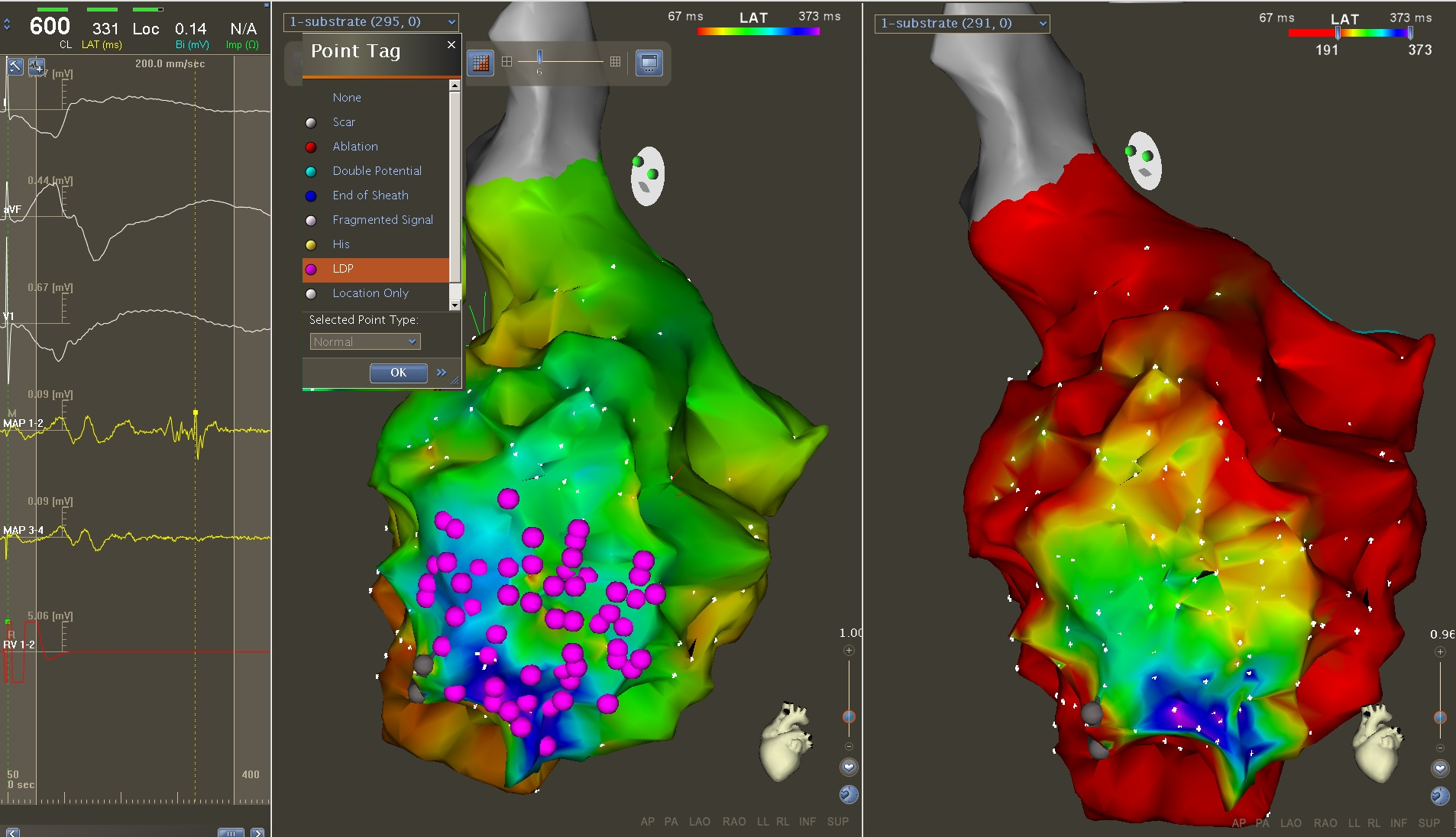
Pacing from abnormal sites
- Non capture to identify scar
- Latency - correlates with late potential - may be discordant in 40% (1)
- Differentiate far field from near field (1)
- Paced morphology
- Putative isthmus (2)
- Baldinger … Stevenson. Electrogram Analysis and Pacing Are Complimentary for Recognition of Abnormal Conduction and Far-Field Potentials During Substrate Mapping of Infarct-Related Ventricular Tachycardia. Circulation: Arrhythmia and Electrophysiology. 2015;8:874-881
- de Chillou C … Marchlinski FE. Localizing the critical isthmus of postinfarct ventricular tachycardia: the value of pace-mapping during sinus rhythm. Heart Rhythm 2014;11:175
Pacemap
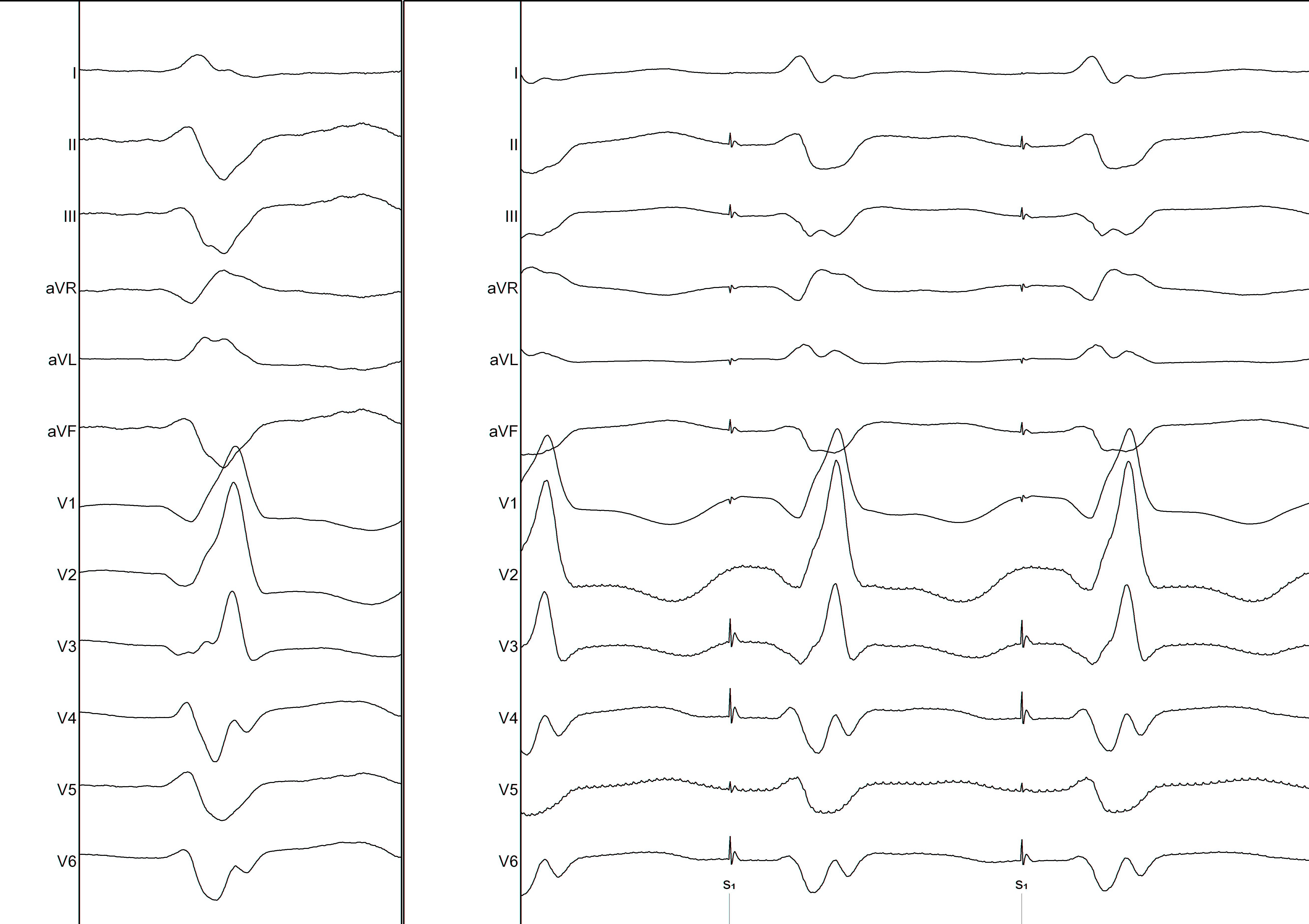
Multiple exits with pacing
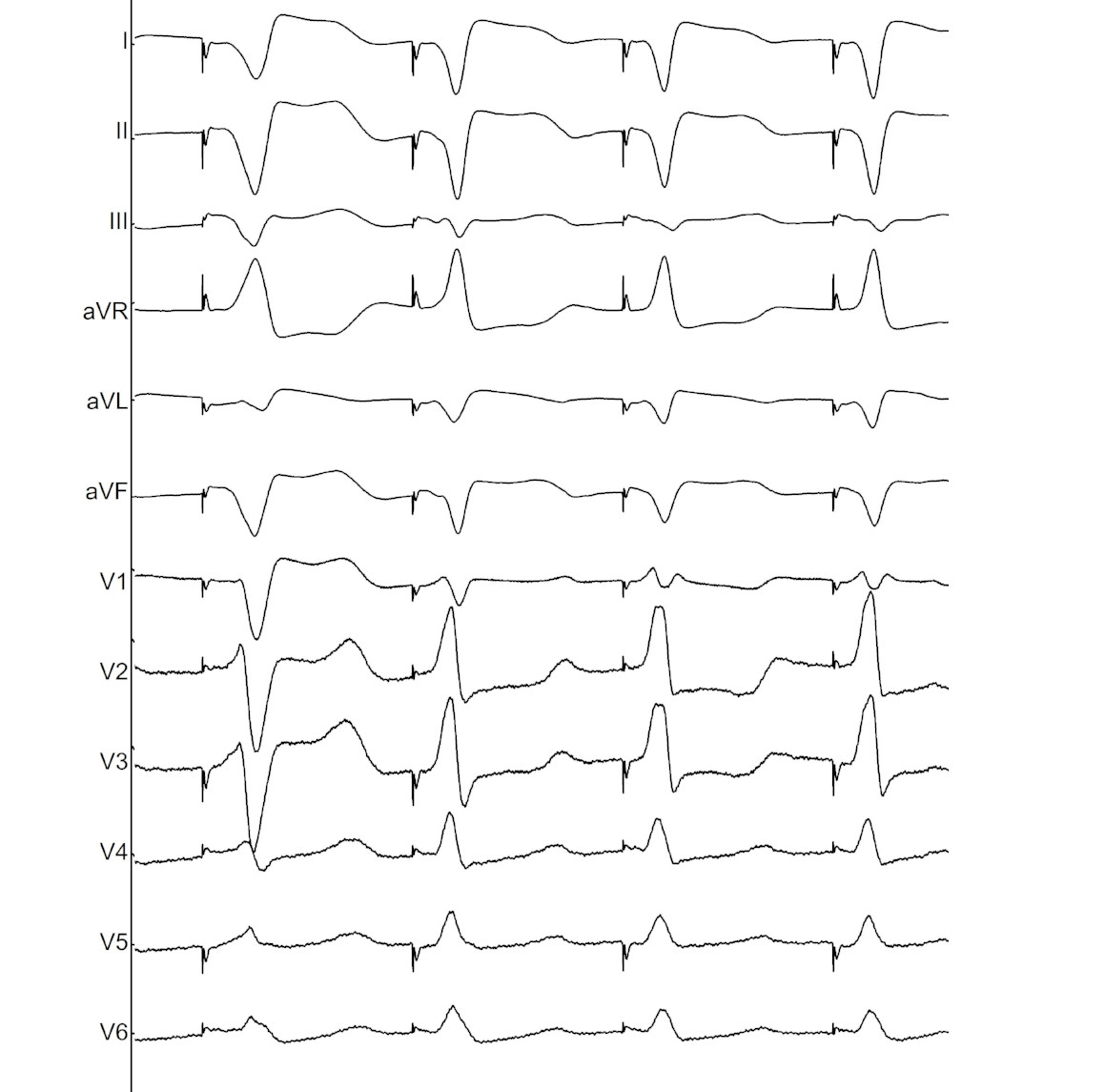
Ablation - Individualized strategy
- Scar with pacemap - linear abl along scar border
- Isthmus within scar / between scar and annulus - linear ablation
- Late potentials - target late potentials
- Channel seen - dechanneling
- Activation map / entrainment - Partial maps, correlation with substrate
Rapid, partial activation map
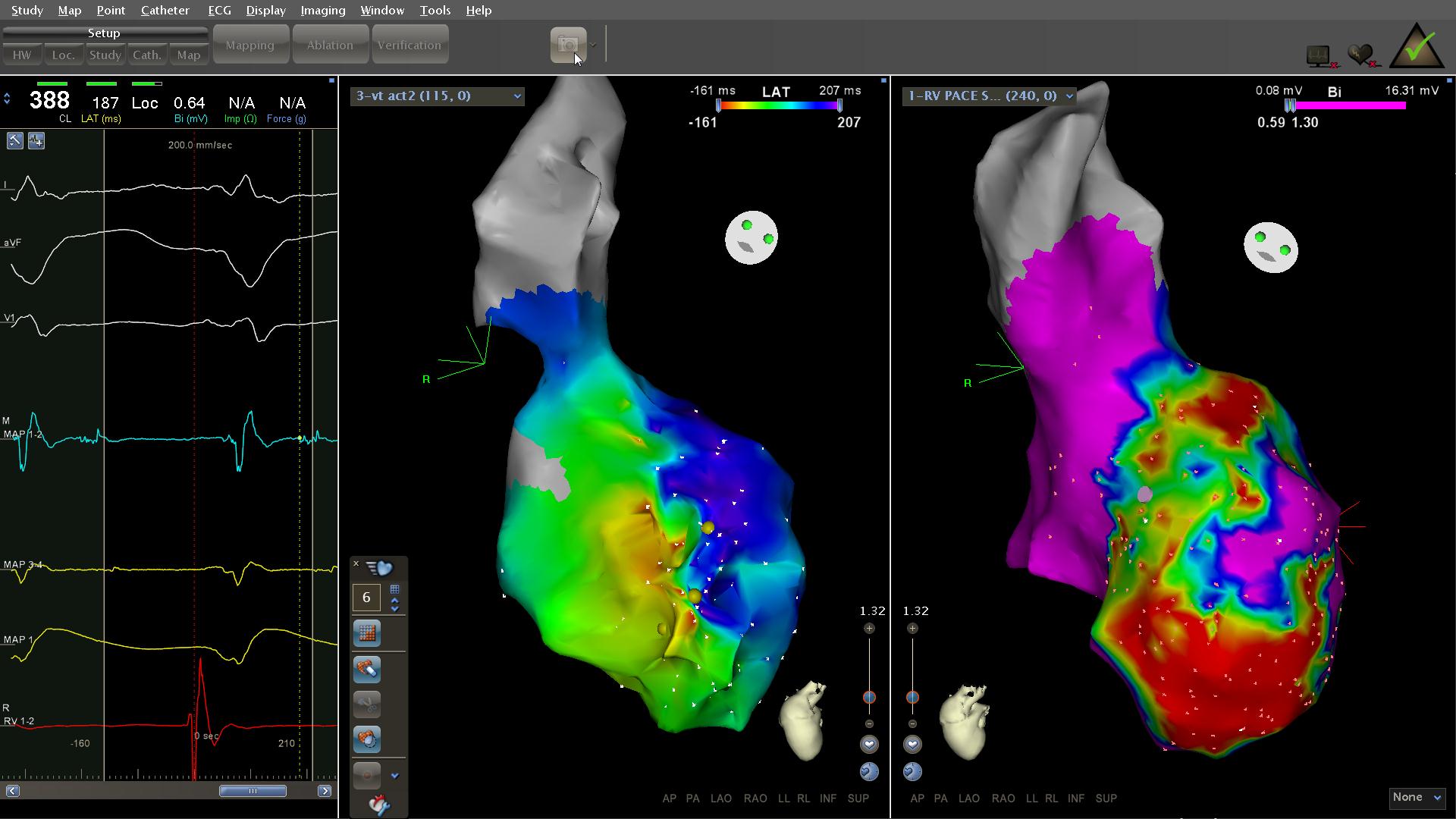
Ablating channels to eliminate LP
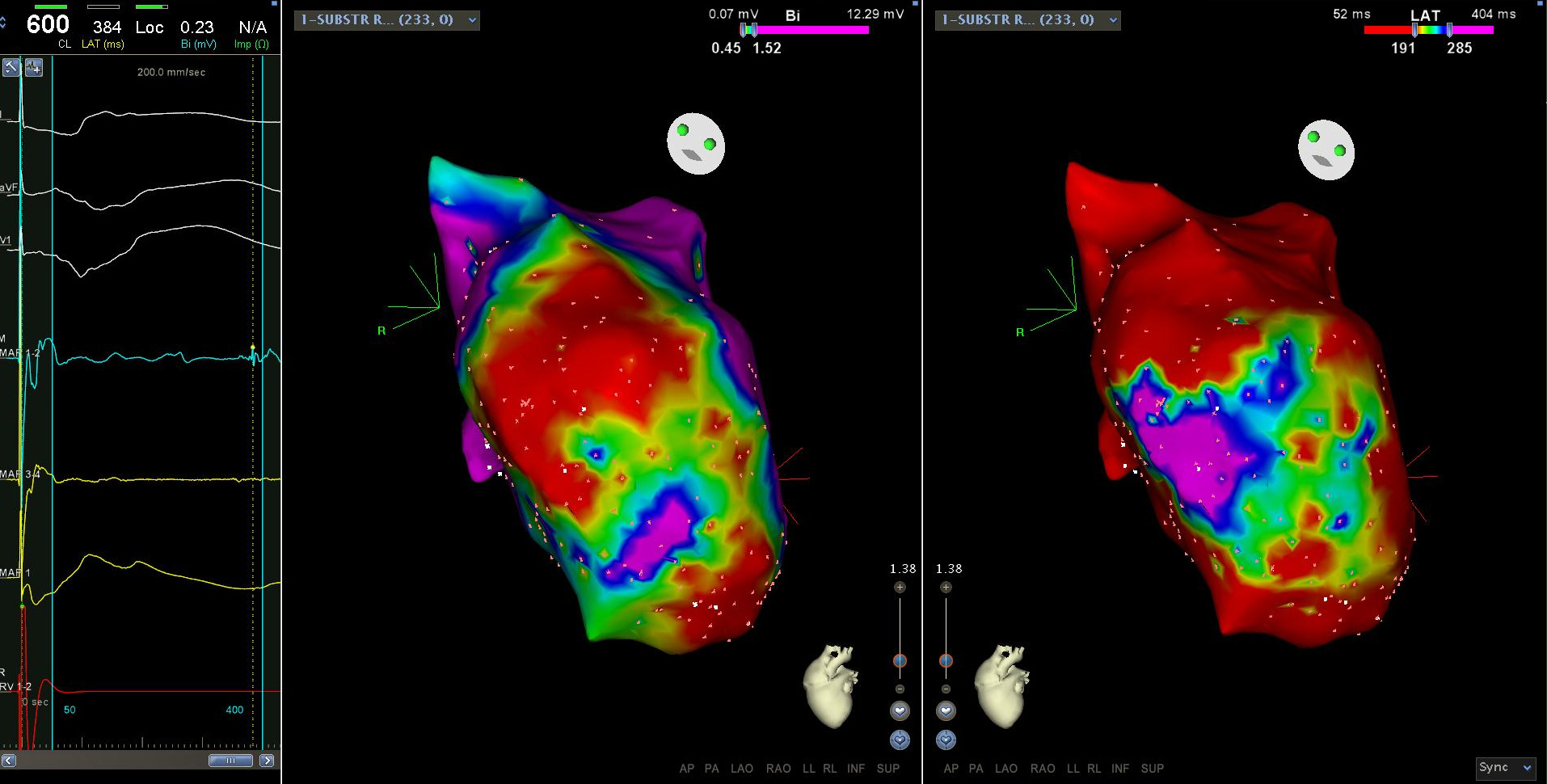
Ablating channels to eliminate LP
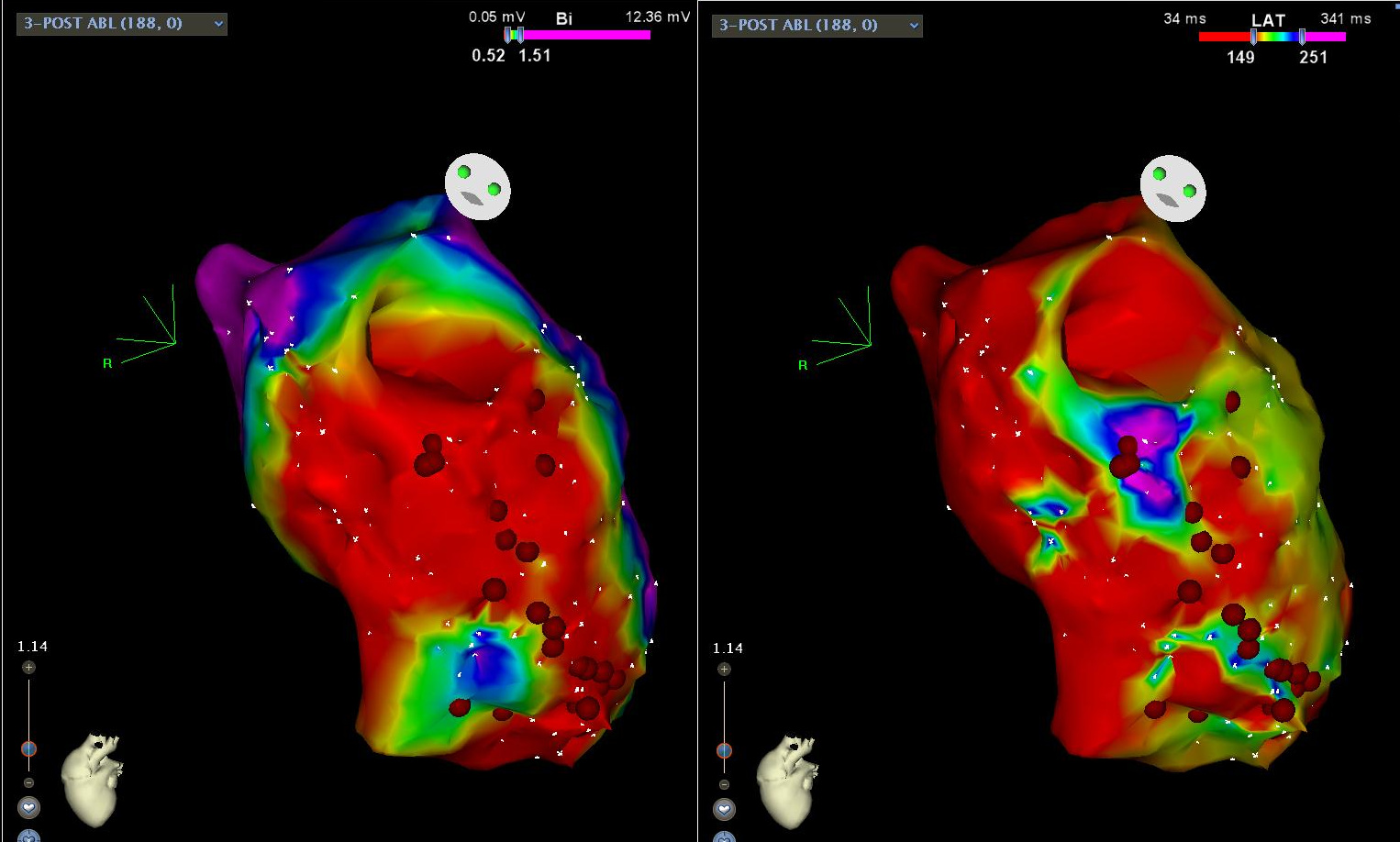
Isthmus - inferior wall MI

Isthmus - inferior wall MI
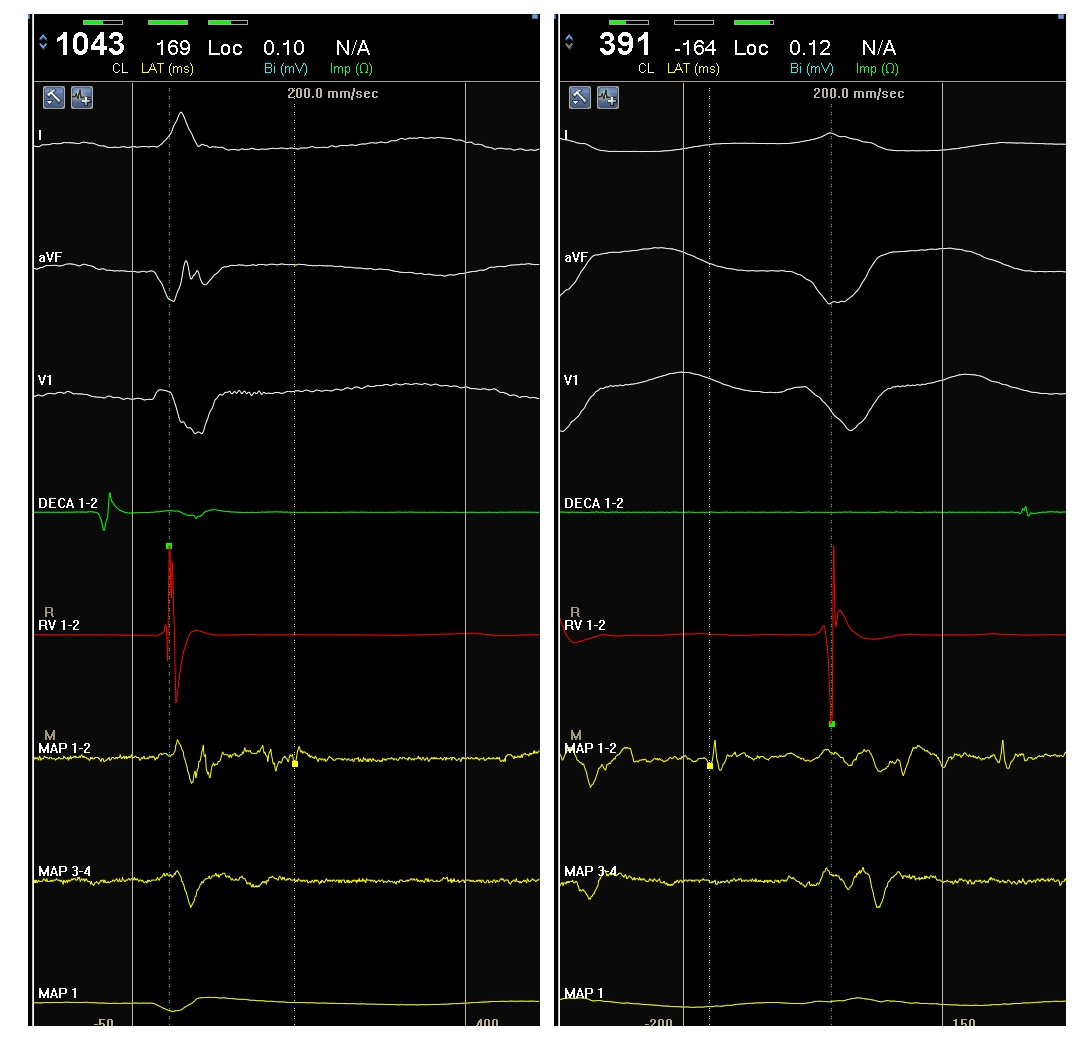
LP ablation
- May not always eliminate
- Ablate at entrance
- Post ablation re-mapping
Power settings
- safety of high power in scar
- 30W / 40 W
- longer duration (1)
Tzou WS … Marchlinski FE. Core isolation of critical arrhythmia elements for treatment of multiple scar-based ventricular tachycardias. Circ Arrhythm Electrophysiol 2015;8:353–361.
Conclusion
Summary
- "Substrate mapping" - common term for a collection of approaches
- Characterisation of locations are based on rhythm other than tachycardia
- Tailored mix of approaches for an individual patient
- Principally substrate based strategy for mapping and ablation remains the cornerstone